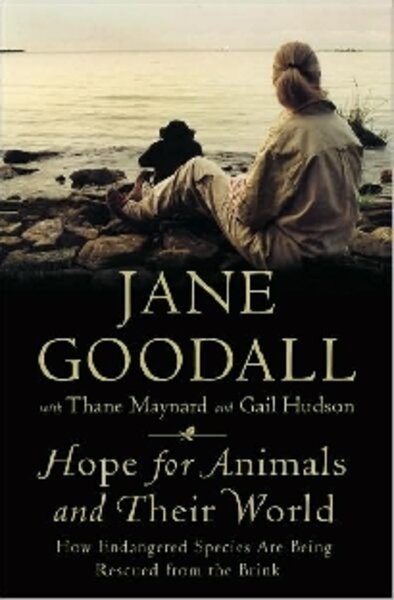Hope for Animals and Their World
Loading...
Throughout the course of her 75 years, Jane Goodall has communed with humankind’s closest wild relatives and watched them, as a species, tumble almost to oblivion. Along with chimpanzees, with which her name is famously synonymous, Goodall has witnessed the forces of modernity push dozens of other animals to the edge of their vanishing points.
For Goodall, both hubris and tragedy reside in the fact that extinctions are being allowed to happen. The question is: What to do about it?
In her new book, Hope for Animals and Their World: How Endangered Species Are Being Rescued from the Brink, there’s a take-home response.
Dreaming of a better world, Goodall notes, does not mean abandoning feelings of visceral anger; nor does it mean getting caught up in the despair and helplessness that would resign us to perpetual gloom. Although she recognizes that some eminent scientific authorities believe that we are experiencing Earth’s sixth major extinction episode, Goodall refuses to capitulate. “To keep up my spirits when I was tired and things seemed extra-bleak,” she explains, “I made a collection of what I call my ‘symbols of hope.’ ”
With the help of co-authors Gail Hudson and Thane Maynard (director of the Cincinnati Zoo and host of NPR show “The 90-Second Naturalist”), Goodall has turned these “symbols of hope” into a book.
Her protagonists are not merely the intriguing animals still hanging on by a thread, but the people who have courageously stepped forward to offer a lifeline. If readers see something of themselves in the actions of field biologists and everyday citizens, then Goodall hopes that they, too, might be inspired to say enough is enough.
From the opening pages, there is somber reason to pause and reflect. The writers dedicate their book to the memory of Martha, the last passenger pigeon, who died on September 1, 1914. And they mention Miss Waldron’s red colobus monkeys and the Yangtze River dolphins, the latter having vanished in the past few years due to overfishing, pollution, and the damming of China’s storied waterway.
But it is never too late to hope. Within the lexicon of imperiled species, there is a phenomenon known as the Lazarus Syndrome, which involves species written off to extinction but then rediscovered and given a second chance at survival. One compelling example is the black-footed ferret, the most endangered land animal in the US that decades ago seemed gone forever but then turned up again in Wyoming. Heroic recovery efforts marshaled by private-public partnerships have resulted in wild ferrets again living in colonies of wild prairie dogs, which, too, have been a focus of deliberate eradication.
Some of the many other species covered are whooping cranes, the giant panda, red wolves, and the California condor.
This obviously isn’t a book full of bedtime stories for kids, but it should be fodder for discussions between parents and their children around the dinner table. While Goodall delicately takes adults and dispassionate plunderers to task, she finds a desperate reason for optimism in the response from young people. Relentless in her travels, especially to college campuses and grade-school classrooms, Goodall spends around 300 days or more each year on the road, trying to shake the millions she addresses out of their collective inertia to the fate of Earth’s natural life. Her own pet program, Roots & Shoots, is operated by the Jane Goodall Institute and now is training a legion of new conservationists who do not want to inhabit a biologically impoverished planet.
In a moving conclusion, Goodall says all humans, be they politicians, scientists, or citizens must dare to admit what they love about nature. Ironically, it was this epiphany that prompted Goodall to leave the jungles to try to build constituencies for chimpanzees, both in neighboring communities and the distant centers of power.
“I best way I know to counteract despair is to do everything I can to make a difference, even in the smallest way, every day,” she writes.
Todd Wilkinson lives in Bozeman, Mont., and is writing a book about Ted Turner.






